
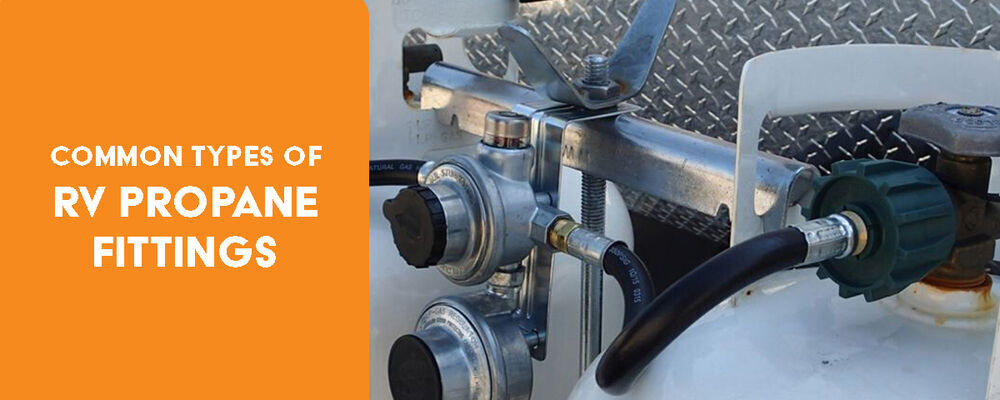
What are the Common Types of Propane Fittings Used on RVs?
Types OF RV Propane Fittings
POL Fittings Type 1 (ACME) Fittings Inverted Flare Fittings NPT Fittings Flare Fittings Quick-Disconnect Fittings 1"-20 (Disposable Cylinder Port) Fittings
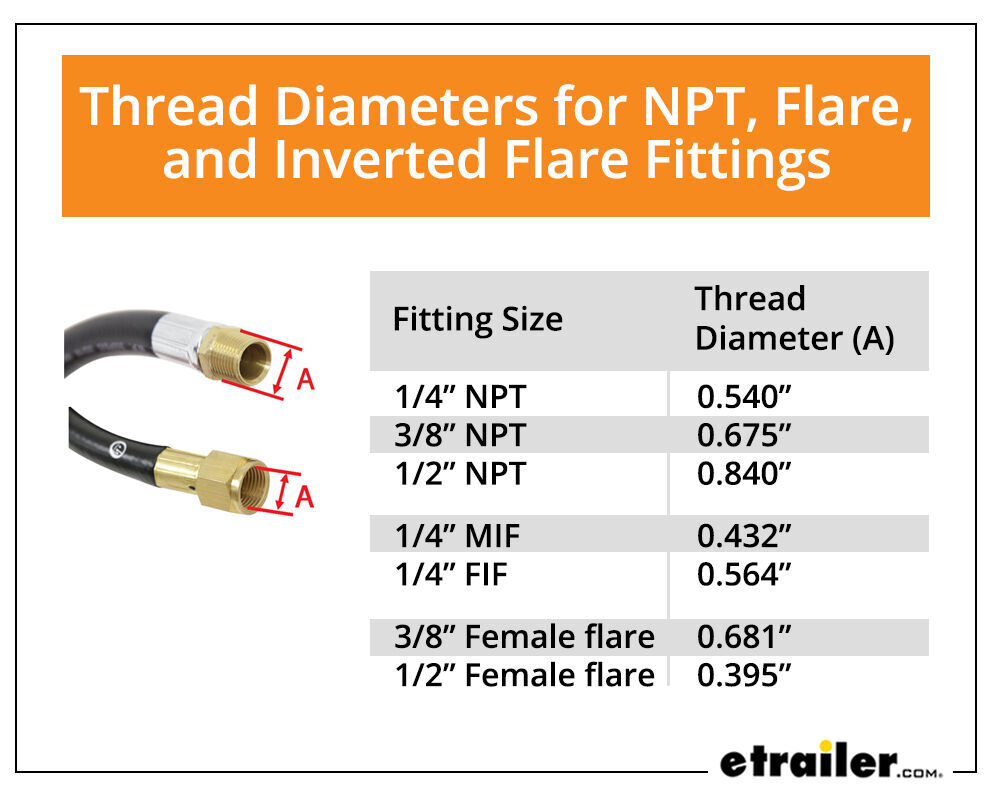
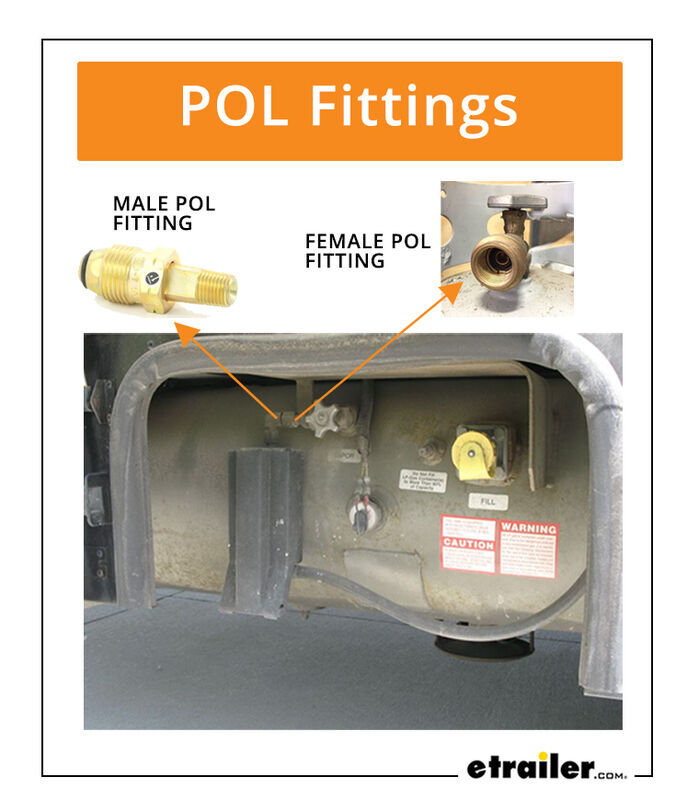
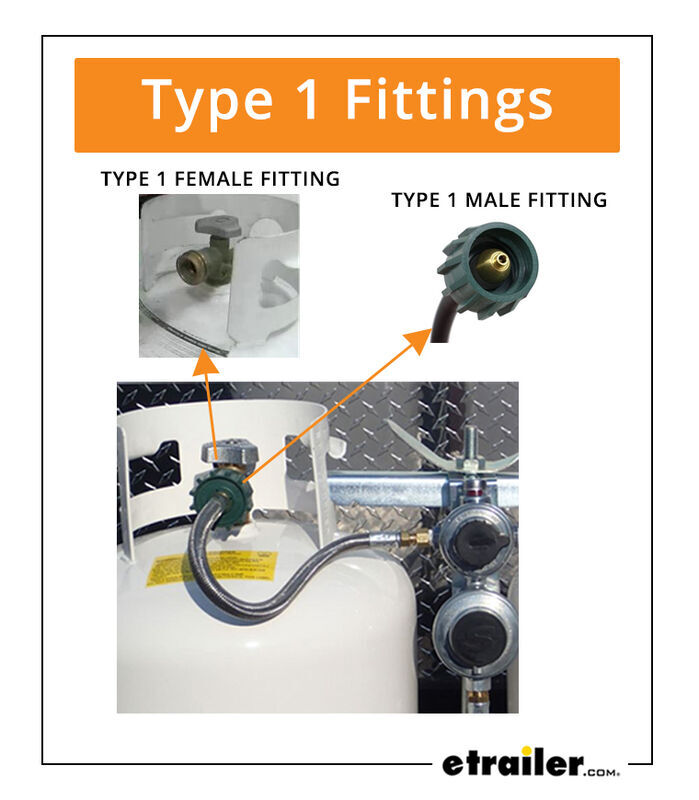
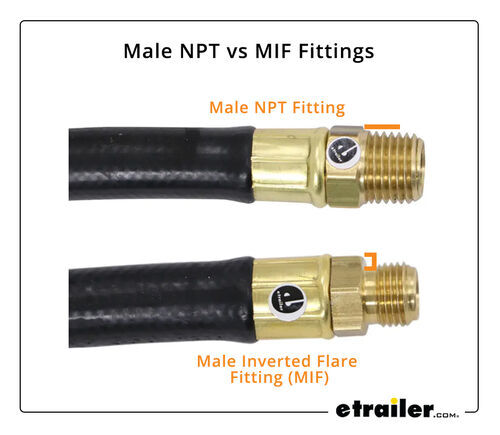
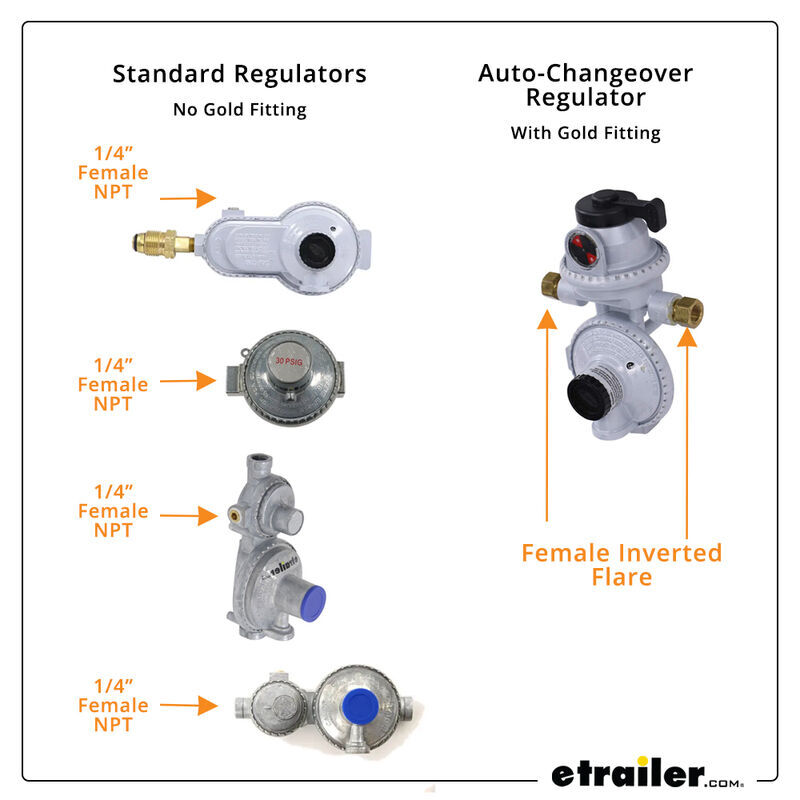
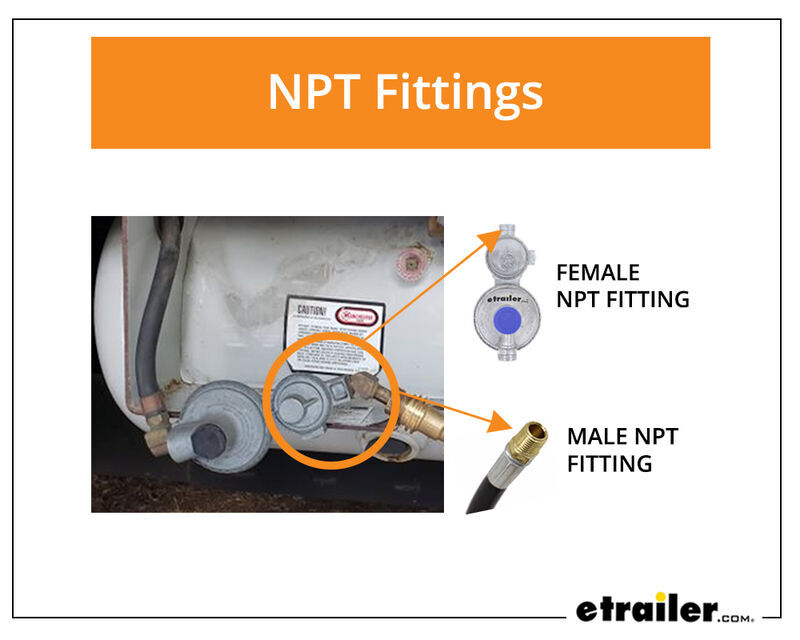
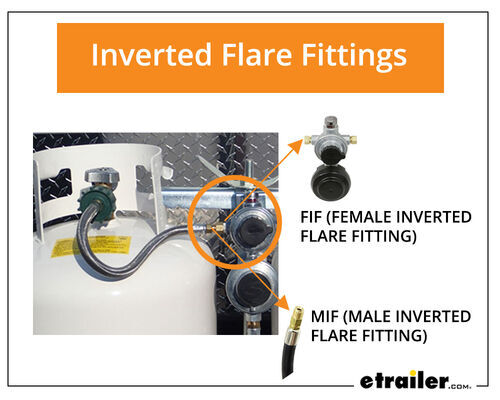
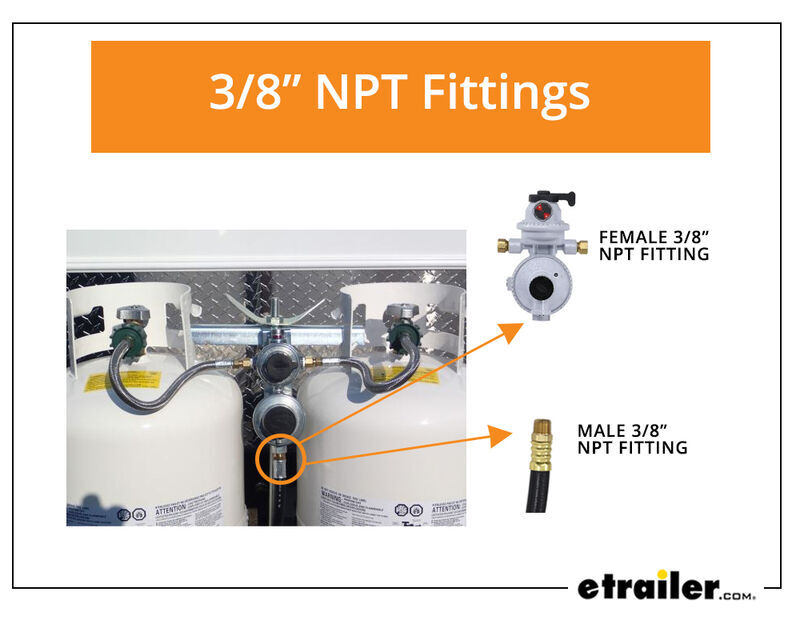
Supply Hose Connected to Main Propane Line
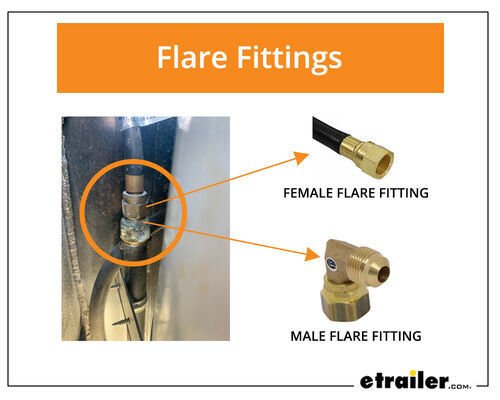
Tee Fitting, Grill, Outdoor Kitchen, or Accessory Port
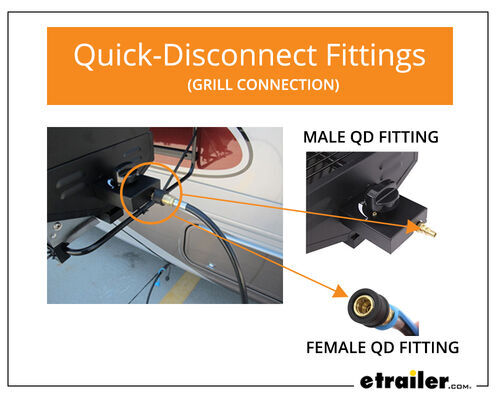
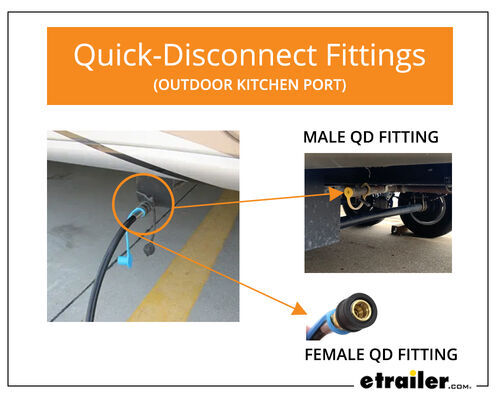
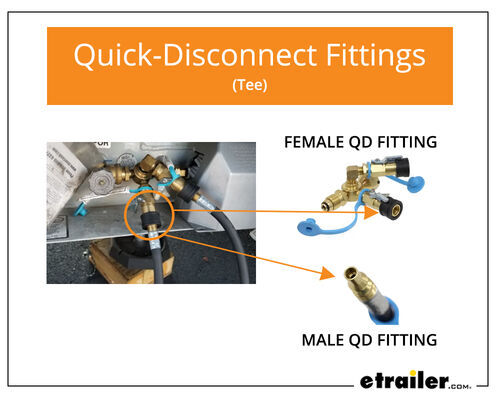
Portable Propane Cylinder
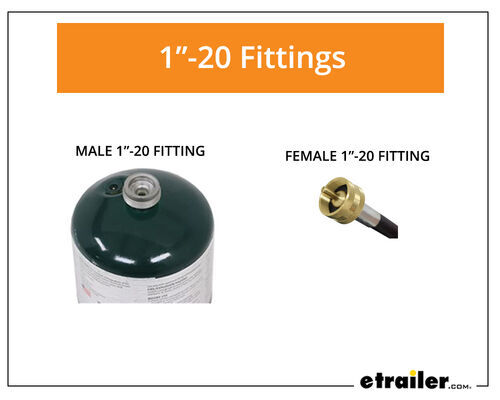

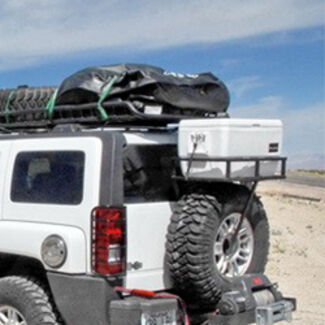
Jeremy B.
10/30/2023
Great article. I'm trying to connect a propane generator to a propane auto chaneover. Problem is, the generator has a propriety quick connect. They provide a hose with a QCC1 female on the other end. I cannot find a 3/8 NPT male to QCC1 adapter anywhere, I suspect it doesn't exist. So how to do I make this happen? Wil a 3/8 Flare fit?

Jonny B.
7/23/2023
I'm looking the extend my pigtails coming off my dual tank regulator to my dual tanks because they are too short. The tension created from bending them to properly fit the two propane tanks causes the hoses to leak at the point where the rubber hose meets the fitting. According to this guide, it looks like my pigtails need to be type 1 male to male inverted flare and at least 2 feet long, preferably longer. Any products here at etrailer like that?


Mike L.
8/2/2023

Jonnyb
8/2/2023

Jonnyb
8/2/2023


Mike L.
8/2/2023


Jonnyb
8/2/2023
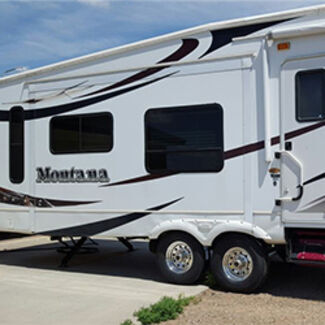
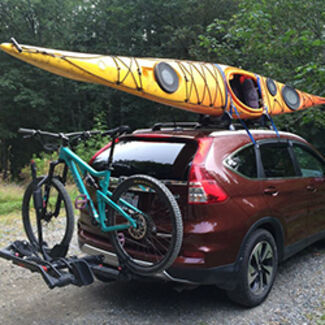
Trevor
7/1/2023
I have a propane leak on the connector labeled 30 PSIG. Does anyone know what that is called? I've looked online to find it and am having no luck. This is on the second propane tank on one side of our 5th wheel.


Heather A.
7/17/2023
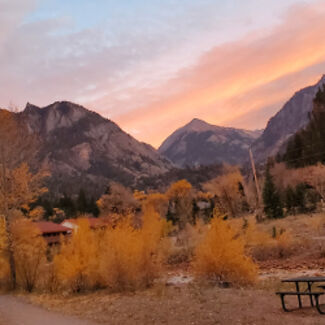

James
6/9/2023
I have a small generator that came with its own regulator hose and quick-connect. The generator's tank connector looks similar to the green Type 1 and even screws onto the RV LP tank, but nothing comes out. Can I replace the tank connector of this hose with a green Type 1 RV tank connector and hook it up to one of my travel trailer's LP tank?
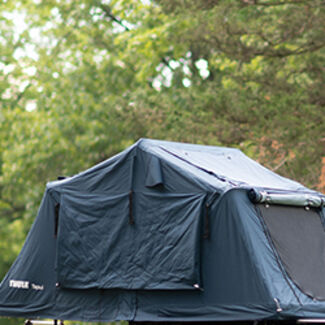
Bob O.
5/30/2023
Hello, looking for a hose extension from RV QD port to a standard Gas Grill ( type 1 male end) do they make them?


Mike L.
5/31/2023
Helpful Links





Jenny N.
11/2/2023
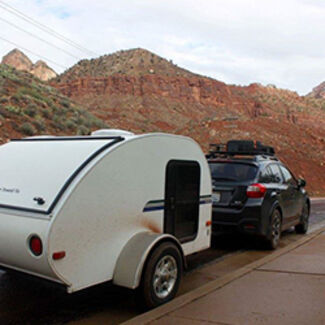
Ryan
4/14/2023
I just purchased a Camco Extend a stay tee. I installed it on my RV tank in hopes to run a hose directly to either my camp chef grill or propane fire pit. Both the camp chef grill and propane fire pit have the same female black screw on type connection that screws directly onto any 5lb propane tank. However, the 12' hose that came with the Camco Tee, does not fit the camp chef grill, nor the fireplace. Could you please help me in what adaptor I need for this setup, or any hose to replace the 12' hose that comes with the Camco Tee. I hope this was clear Thank you

Brett
3/13/2023
looks like the connections in the "Type I Fittings" are miss-gendered. shows tank side as male and pigtail as female. should be reversed. They identified correctly further down in the article.


Ryan
4/14/2023

Tonya
7/2/2023
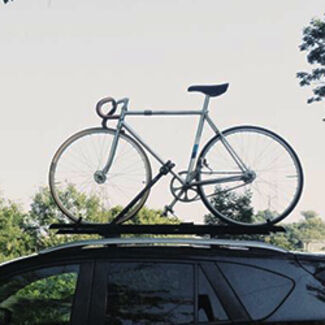
Smn
2/23/2023
I removed a pigtail from the regulator and several small pieces fell out. I have new hoses that are replacements,but they do not contain the small pieces. Can i still use them ?

Mike L.
3/8/2023
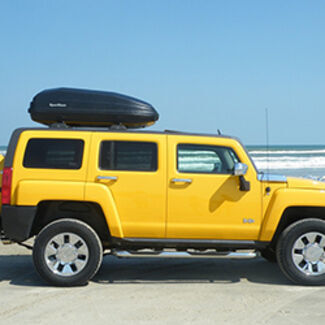


Mike L.
2/8/2023
Helpful Links

Mike L.
3/24/2023

Berta
1/26/2023
The original supply line (one that connects to the rv) is way bigger than 1/2 in or 3/8. I got a 1/2 inch female flare to connect hose to main rv supply and it is at least a size to small! I can't find information ANYWHERE on propane connections larger that 1/2 inch. Did they make connections larger than that early on? It's a trailer from the 1980s


Mike L.
1/26/2023
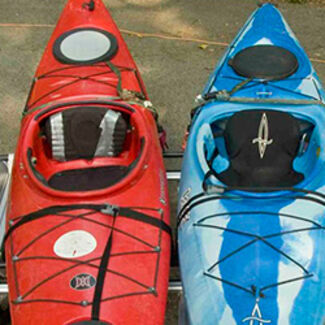
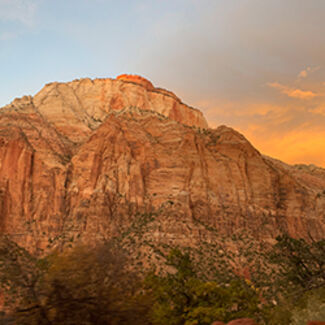
Arlene B.
11/26/2022
I have a 5th wheel with 2-30# tanks, one on each side. I am hooking up a 100# tank on each side as I am staying long term. What is the best way to do this?


Mike L.
3/24/2023
Helpful Links

Tim
11/15/2022
Inside the tank valve (20 or 30#) there is a rubber seal. Do you have source to purchase these seals?

David B.
11/15/2022


David B.
11/21/2022
Helpful Links

Jim T.
6/22/2022
Trying to add a tee fitting (for a quick disconnect) on my motorhome propane tank regulator (permanent mount tank) It has a 1/2 " male flare fitting coming out of the regulator with a 1/2" female flare hose attached; that's where I want to split it. So the tee fitting would need to be 1/2" male to 1/2" female with a 1/2"pipe thread on the other leg (1/2in leg size not critical )

David B.
6/22/2022

Jim
6/2/2022
WHO MAKES UP THESE HOSES FOR PROPANE, CAN'T FIND ANYONE HERE IN GREENWOOD. TOOK FITTING OFF MY MAIN LINE,IT WAS VERY WET AND FULL OF BLACK JUNK! WHAT IS THAT FROM!TRAILER IS A 2014 TRAIL RUNNER. IS THERE ANY KIND OF FILTER TO CATCH THIS STUFF?

David B.
6/3/2022
Helpful Links

Gary
4/27/2022
Hello. Are all Type 1 propane connectors required to have the auto shut off feature when there is a leak on the low-pressure side of the regulator? Are there Type 1 propane connectors available that provide this auto shut off safety feature better than other products? Thank you.

David B.
4/27/2022

David B.
4/27/2022

Gary
4/28/2022

David B.
4/28/2022


David B.
4/28/2022

Gary
4/28/2022

David B.
4/29/2022
Helpful Links

Rick M.
4/26/2022
Hello! Question please, on my camper, the propane line from my regulator to the connection on my camper is 3/8 male/female ends and a hose diameter of 3/8. I have a hose diameter of 5/16 with 3/8 ends. Will this smaller size diameter hose work with my camper propane usage? Thanks for any help…

David B.
4/26/2022
Helpful Links


Ron P.
3/19/2022
I am trying to put in a quick connect right after the regulator on my 2017 motorhome using a t fitting coming out of the regulator to the hose for the rest of the motorhome. Is there one already built to do this. I can install just need the part number can’t find one on line.




Les D.
3/22/2022

Ron P.
3/22/2022


Ron P.
3/22/2022

Gil
2/8/2022
How do I use the low pressure propane quick connect on my motorhome to refill 1lb disposable canisters? or can I? I see plenty of adapters for QCC1 / Type1 Propane Tank to 1LB Throwaway Disposable Propane Bottles but cannot find any information on using the low pressure quick connect to refill the small disposable canisters. Is it even possible? I like the mobility of using the small tanks for my small bbq so I really dont want to modify it to be connect to the motorhome with a hose. I just want to be able to refill the disposable bottles. Any thoughts on what I need to get to accomplish this? thanks

Les D.
2/8/2022

Gil
2/8/2022

Les D.
2/9/2022
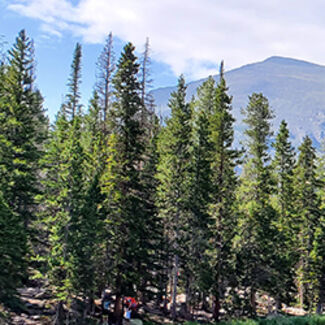
David T.
1/21/2022
After I sent previous comment I realized I had not mentioned something I need verification on. When I was in Columbus that winter I mentioned and had the bulk tank installed, I was present when it got done. However I don’t remember if the propane coming from bulk tank went through a regulator or not before it entered my regulator via a copper line. I read one of your answers regarding not using 2 regulators would you please advise me on this. I found you while trying to educate myself on the national propane association guidelines/specs pages. Note: 3 other company employees were in same camp ground with me and all new to RV life. They all praised me for talking them into having installed on the rigs because of the incredible cold which started just 2 weeks after our arrival. Sincerely, just a long winded 67 y.o. retiree trying to enjoy life. David

Les D.
1/21/2022

David T.
1/21/2022
Hello folks, I am so impressed with your website that I just had to say hello and tell you how much I wish I could have found info like you produce back when I started living full time RV. You get 5 stars from me. Had many adventures trying to adapt propane hoses so as to use larger tanks.I traveled for a living for 20 years, I now own my 3 rd RV ( 40 ft 5th wheel ) and retired 2 yrs ago. It is in my back yard serving as guest quarters situated so I can take it out and put it back. Recently put in new 50 amp service, water and sewer. Have been using 2 -100 lb propane tanks to supply it. Had a back injury 1 1/2 yrs ago so, loading those into a GMC 3500 Denali Dually has become Very difficult. Now working on putting in a 150-250 gallon tank requiring installation of copper line to my onboard regulator. (Note: I had a bulk tank connected to my 30 ft when in Columbus several yrs ago. We had temps of 30 below with wind chill of 40 below that winter so good thing I knew it was critical to have it done). Propane company didn’t give me any hassle. WOW, the many regulations I have encountered, with this here in north La., 1) getting a company to supply my needs, 2) their policy regarding distant from “things”, 3) they will not rent me a tank, 4) or install line to RV. However I had planned all this to the best of my ability ( raised on farm using propane and retired electrician) I am making progress and will “getter done” when I find a tank to buy ( they say tanks are in short supply nationally. Keep up the good work of this publication, RV owners/ readers need your kind of knowledge and help. Lot of topics covered and questions you answered I had to learn the hard way. Wish me luck. Thank you and sincerely yours, David
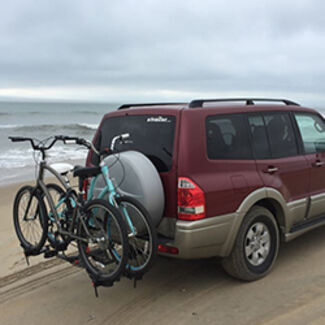
Mark
1/14/2022
By my experience most of the 2 tank regulators have a check valve where the tank lines connect. Some have a check ball and spring behind the 1/4" male npt to 1/4" female inverted flare adapter. On others the check valve is built into the 1/4' npt to 1/4" inverted flare adapter. My regulator is good but the check valve is bad. Do you have or can you refer me to a source for the built in check valve / adapter? Thanks, Mark

Les D.
1/17/2022
Helpful Links

Hi C.
12/22/2021
Hi i just purchased a stove, guy said it was connected to propane. But the hose coming out of the stove is a small yellow one i believe both ends are 3/8, so what kind of connection do i need to be able to hook it up to a propane tank from the stove which is a 3/8 connection yet the tank is type1. And do i need a regulator? Thanks

Les D.
12/22/2021

Hi C.
12/22/2021

Les D.
12/22/2021


Wes
12/16/2021
I am looking for a fitting that will allow me to screw on a Type 1 hose (which is meant to screw onto a 20 pound tank fitting) onto a regulator. So either a regulator with a Type 1 outlet, or a flare-nut to Type 1 adapter. Do you know of such a thing?

Les D.
12/17/2021

Wes
12/17/2021

Les D.
12/17/2021

Wes
12/17/2021

Les D.
12/20/2021

Jennifer M.
12/8/2021
Hello! I have a 1995 motorhome that I’m trying to put an extend a stay on. The one I ordered is a 1/4 in fitting but it’s apparently way too big for what’s on my motorhome. What would be the size on my motorhome if the quarter inch is way too big? Thank you for your help!

Les D.
12/9/2021
Helpful Links

Jennifer M.
12/10/2021


Tonya S.
10/17/2022

David B.
10/20/2022

James
11/18/2021
I would like to convert the tank fitting to type1 for my propane converted generator. I notice they have different BTU ratings. I have a Predator 3500 watt generator. I saw a 200,000 btu connector. Would this be suitable for me? Thank You Jim

Les D.
11/24/2021

James
11/24/2021

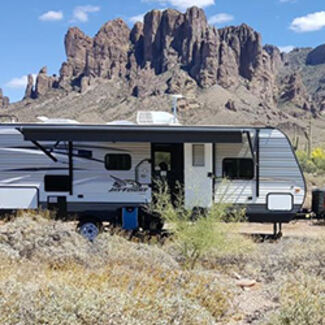
Norman K.
11/3/2021
Clear and understadable. Well-written and informative. I will print and laminate. BTW, is there a way to fill my onboard RV tank? RV is stationary and propane company will not come and fill it. Lastly, if I opt for the company's pig and locate it next to the RV, how can I also run a 100' line to my travel trailer (has the two twenty pound tank setup.) Thanks

Les D.
11/4/2021

Show All (32) Replies
Hide Replies

on Propane
Videos
for Propane
Help Articles
for Propane
Expert Answers
for Propane
Hey Chris, it sounds like all you'd need to connect the MB Sturgis Propane Extension Hose for Small Appliance #100284-144-MBS to the Camco Automatic Changeover 2-Stage Propane Regulator for Dual Propane Tanks #CAM59005 is the MB Sturgis…
view full answer...There are differences that the colors reference for the Type 1 Propane connectors based on the spring tension and flow rate. The light green connectors are rated for Rated for 200,000 Btu per hour. The black are rated for 70,000-100,000 Btu per…
view full answer...The SuperSprings Custom Suspension Stabilizer and Sway Control Kit #SSA22 is listed to fit and install above the leaf springs on your 2019 Coachmen Leprechaun 319MB. I tried looking up a photo of the suspension on your motorhome but I could find…
view full answer...100lb propane tanks typically have a female POL fitting so you'll just need to swap over the hoses to ones that have a male POL fitting and can still connect to your regulator/piping the same way the current hoses do. Most regulators have a…
view full answer...Most regulators like the part #CAM59005 have an inlet of 1/4 inch SAE and an outlet of 3/8 NPT. It would be out of the ordinary if your tank to regulator wasn't 1/4 inch SAE inverted flare. Part #CAM59053 has this style of fittings on both…
view full answer...Yes, the #100019-24 pigtail can be used to connect your dual-cylinder 100 lb propane setup to the regulator on your RV. Since this hose does not have a back-check to contain a gas leak, you will need the #204120-MBS fitting that includes a…
view full answer...To add a 100 lb tank to your two 30 lb tanks, I recommend the MB Sturgis Sturgi-Stay T-Fitting w Hose - Type 1 Valve - Quick Disconnect, Disposable Cylinder Ports #103615. This will allow you to connect the red fitting to one of your tanks and the…
view full answer...I've attached the installation instructions for the Progressive Dynamics Pure Sine Wave Inverter w/ Transfer Switch - Remote - 2,000 Watts - 12V #PD64FR for you below.
view full answer...Thanks for reaching out! While we don't carry that specific brand, there are some common operations between dual two-stage regulators so I'll be able to shed some light onto the subject for you. When using a two-propane tank setup…
view full answer...I have a couple options that you can consider for your Champion Dual Fuel Generator. First is the simplest as everything can be easily attached to your current hose and regulator. The MB Sturgis Sturgi-Stay T-Fitting w Hose #103615 will add a tee…
view full answer...Currently the Furrion Vision S Wireless RV Backup Camera System #FOS43TASF can only be viewed on the included monitor. While it is also offered with a 5" #FOS05TASF or 7" Screen #FR98NR there is no way to link it with the factory…
view full answer...I am happy to help set you up, but we do not have a database that would tell us bearing sizes based on a year, make and model. If only it were so easy, right? You may be able to get that information from a forest river dealership if you give them…
view full answer...Departments
Towing
- Trailer Hitch
- Fifth Wheel
- Gooseneck
- Towing a Vehicle
- Front Hitch
- RV Hitch
- ATV Hitch
- HD Truck Hitch
- Vehicle Wiring
- Brake Controller
- Ball Mounts
- Weight Distribution
Sports and Recreation
Trailer Parts
- Utility Trailer
- Boat Trailer
- Landscape Trailer
- Enclosed Trailer
- 5th/Camper Trailer
- Car Hauler
- Horse Trailer
Vehicle
Contact & Help

What our customers are saying:
"Easy place to shop. Fast delivery and great products. Very happy with my purchase."
Popular Vehicles
- Subaru Forester
- Ford F-350 Super Duty
- Ford F-250 Super Duty
- Chevrolet Silverado 1500
- Jeep Wrangler Unlimited
- Jeep Wrangler
- Ram 3500
- Toyota Highlander
- Ram 2500
- Chevrolet Silverado 2500
- Subaru Outback Wagon
- Chevrolet Silverado
- Dodge Ram Pickup
- GMC Sierra 2500
- Ram 1500
- Ford F-250 and F-350 Super Duty
- Jeep Grand Cherokee
- Toyota Tacoma
- GMC Sierra 3500
- Toyota Tundra
- Ford Escape
- More >>
- Jeep Cherokee
- GMC Sierra
- Toyota RAV4
- Nissan Rogue
- Dodge Grand Caravan
- Toyota Sienna
- GMC Sierra 1500
- Honda Odyssey
- Chevrolet Equinox
- Chevrolet Silverado 3500
- Ford Explorer
- Chrysler Town and Country
- Ford F-150
- Jeep Liberty
- Nissan Murano
- Ford Edge
- Subaru XV Crosstrek
- Hyundai Santa Fe
- Chevrolet Silverado New Body
- Ford F-250 and F-350 Heavy Duty
- Kia Sorento
- Chevrolet Traverse
- Dodge Journey
- Acura MDX
- Honda CR-V
- Chevrolet Silverado Classic
- Jeep Patriot
- Ford Focus
- Acura RDX
- Honda Fit
- Ford Fusion
- Ford Flex
- Honda Pilot
- GMC Acadia
- Toyota Prius
- Dodge Durango
- Nissan Frontier
- Nissan Pathfinder
- GMC Terrain
- Honda Accord
- Volkswagen Jetta
- Kia Soul
- Dodge Dakota
- Chevrolet Cruze
- Chevrolet Sonic
- Mazda 3
- Toyota FJ Cruiser
- << Less


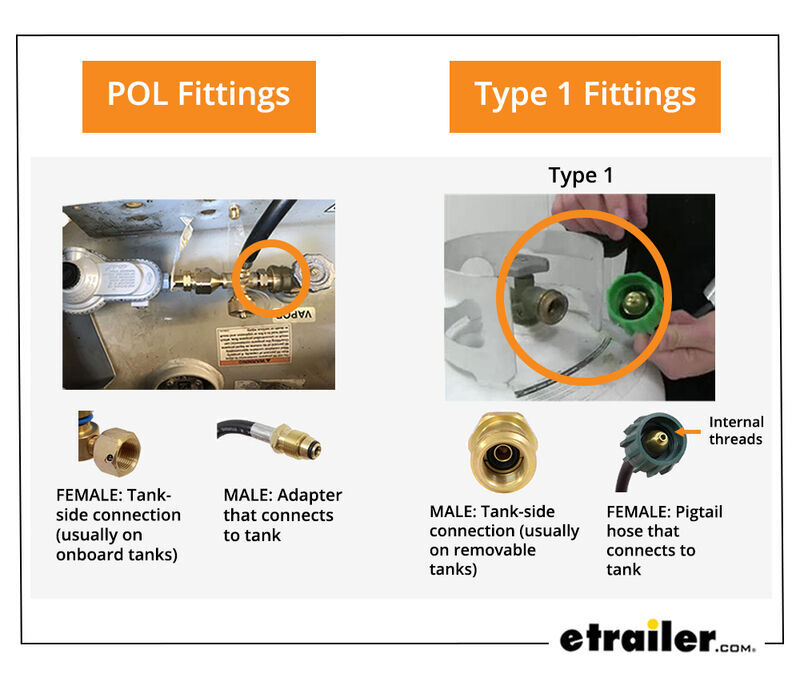
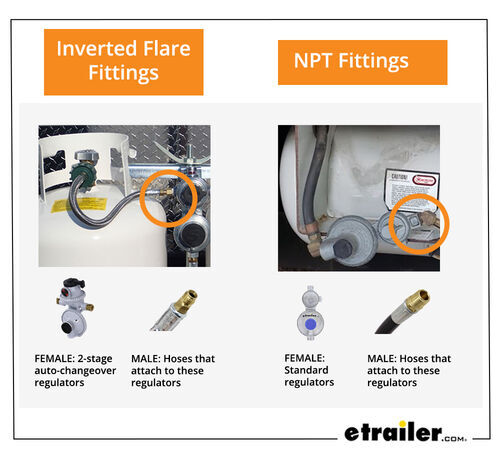
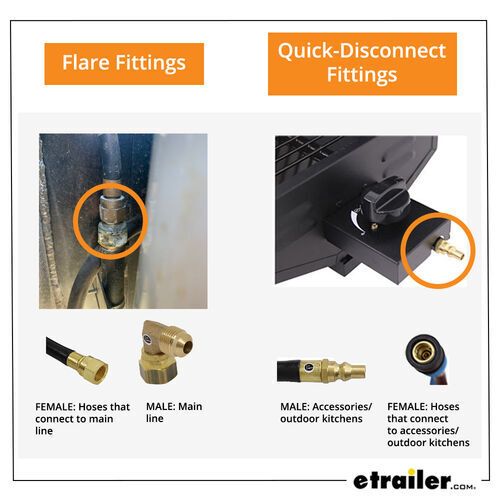
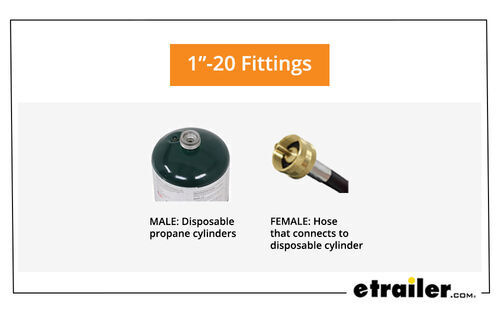
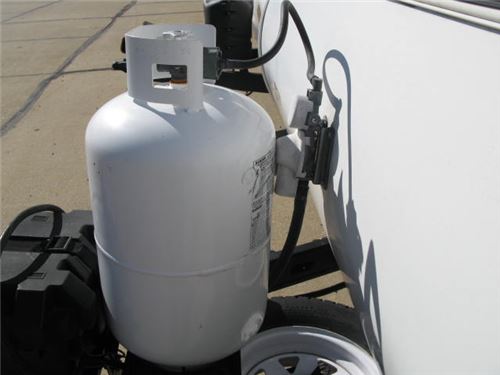
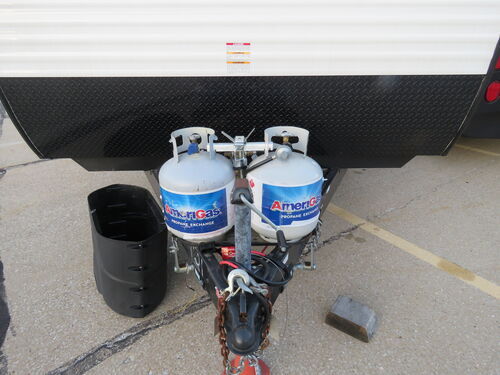

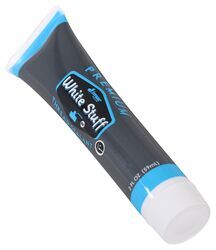
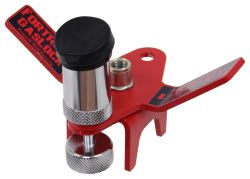
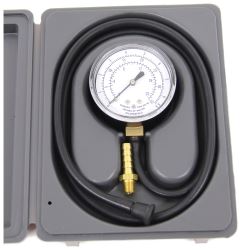


















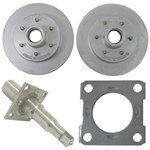





Benjamindees
11/27/2023
It's really important to point out that there are (at least) two different flare fittings in common use and that they are INCOMPATIBLE with each other and WILL LEAK due to different flare angles.